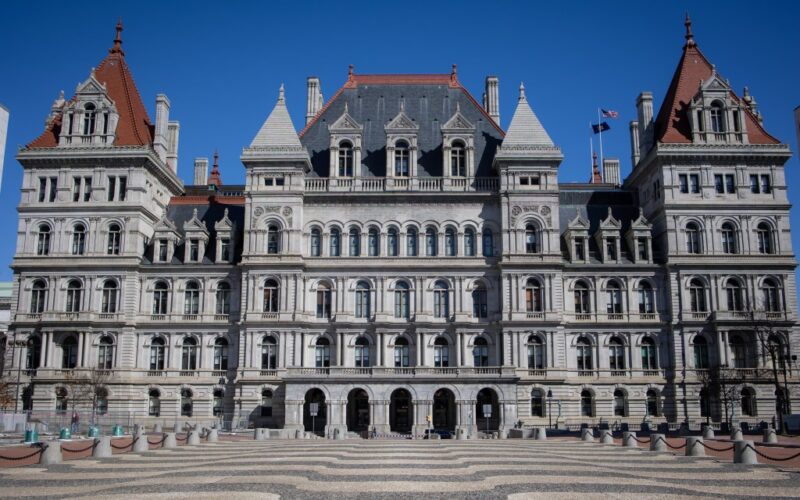Over the past few weeks, hundreds of millions of dollars of federal aid have been abruptly pulled from New York’s mental health, public health, and flood protection programs through federal executive action. Simultaneously, congressional Republicans are preparing to impose up to $2 trillion in federal budget cuts over the next 10 years, which will be concentrated in cuts to Medicaid and food stamps — programs that provide millions of New Yorkers with health insurance and food security.
New York State could lose in the range of $10 billion to $15 billion in annual federal funding. In response, we’ve heard a common refrain from the governor and other elected leaders: New York can’t fill the funding gaps that are to come. It’s true that federal cuts will be a significant challenge for New York, which relies on more than $90 billion in federal funding each year. But the assertion that there’s simply no way to fill federal funding gaps is not accurate and reflects Albany policymakers’ failure to budget responsibly.
New York is one of the wealthiest states in the country, with a state economy larger than Canada’s and a growing population of multi-millionaires and billionaires. The state has an annual budget in excess of $250 billion, $34 billion in reserves and an enviable tax base.
Instead of treating cuts as unavoidable, New York lawmakers should be developing plans to protect working-class New Yorkers from federal austerity and economic turmoil. Unfortunately, they have resigned themselves — mistakenly — to the view that nothing can be done. Even worse, they are planning wasteful one-time spending initiatives and permanent tax cuts for the relatively well-off that will make it even harder for New York to face federal headwinds.
Gov. Hochul opened the state budget season with an “affordability agenda” consisting of one-time checks and a small tax cut for households making up to $300,000. The one-time checks — dubbed an “inflation refund” — will cost $3 billion and provide $500 for a married couple (and $300 for a single individual). But the scale of these payments is simply too small to alleviate the stresses imposed by the past few years of inflation.
The median renter household in New York saw an increase in rent of about $3,000 per year between 2020 and 2023 and the median cost of child care in New York City increased by more than $5,000 annually between 2018 and 2023. Instead of mailing out checks, which will do nothing to change these trends, the state could make long-term investments in low-cost housing and child care.
The governor’s proposed tax cut is an even more concerning proposal, as it will permanently weaken the state’s fiscal position, with a $1 billion annual cost that will grow over time. The tax cut is also regressive in nature: More than 30% of the forgone revenue will go to the pockets of households that earn incomes in the top 20% of the state income distribution.
Further, the policy is regressive: New Yorkers making $100,000 per year will receive a benefit of about $15 each month, while a household earning $300,000 per year will receive $50 each month. This is not the way to design a policy that benefits working and middle-class New Yorkers.
Simply removing these tax cuts and refunds from the budget would give the state another $4 billion next year to brace for federal budget cuts or a likely recession. The state would have an additional $1 billion from simply maintaining the current corporate tax rate, rather than allowing a planned tax cut to take place (as is planned in the governor’s budget).
If the state needs even more revenue, it has many practical options: Small income tax increases on top earners could easily raise $2 billion. The state’s corporate tax is lower than all of our neighboring states, and raising it to match New Jersey could raise $5 billion each year. If the state needs to go even further, it could consider imposing a low-rate sales tax on services, which could raise nearly $8 billion at a rate of just 1%.
It’s true that New York may see multi-billion-dollar funding cuts from the federal government, but New York can and should fill significant portions of expected gaps. New York’s elected leaders must start by eliminating wasteful tax cuts and one-off payments from this budget, and then prepare to raise revenue as necessary to protect the programs ordinary New Yorkers rely on. Their constituents should demand that they do so.
Eisner is the chief economist of the Fiscal Policy Institute, where Gusdorf is the executive director.








